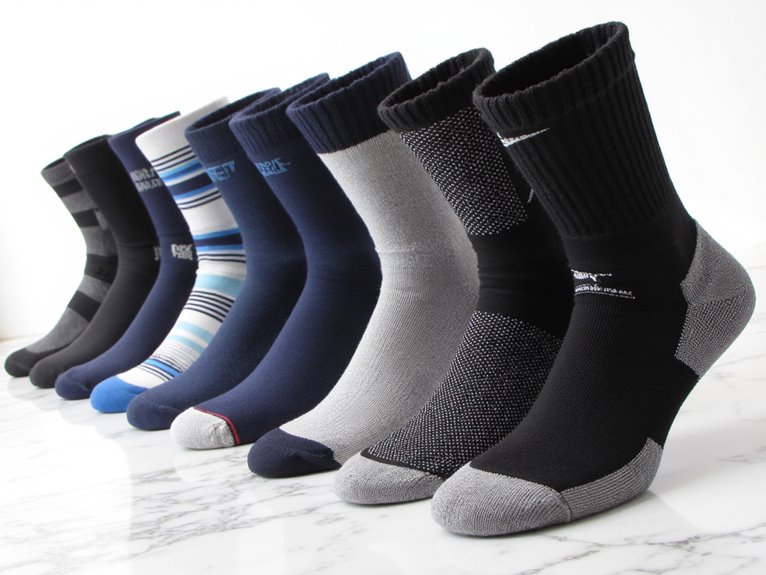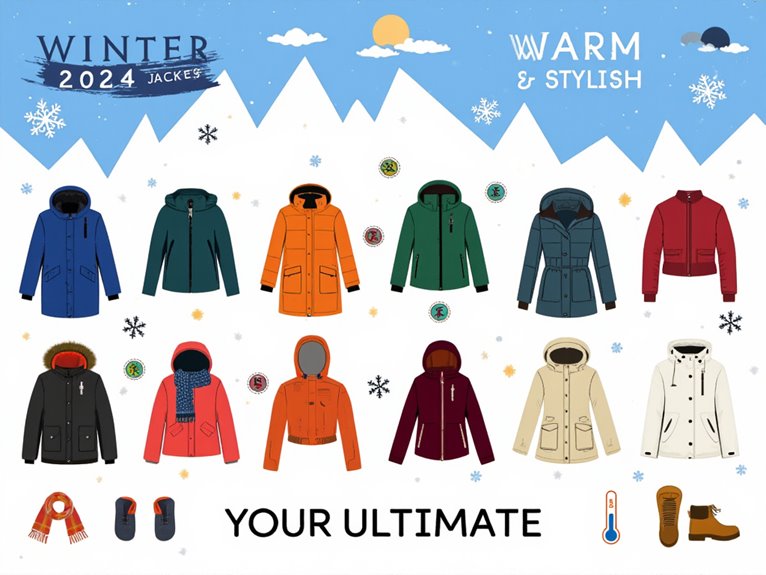What Size Backpack Do I Need for a 7 Day Trip?
For a 7-day trip, determining the ideal backpack size depends on a delicate balance between packing all necessary gear, adhering to air travel restrictions, and ensuring comfort and mobility while carrying your belongings. A 40-50 liter backpack is a good starting point, but evaluate factors like activity type, climate, and personal preferences to refine your choice. By evaluating your specific needs, you can find a pack that meets your requirements. As you continue to plan your trip, you'll uncover more nuances to weigh when selecting the perfect backpack size.
We are supported by our audience. When you purchase through links on our site, we may earn an affiliate commission, at no extra cost for you. Learn more. Last update on 26th December 2025 / Images from Amazon Product Advertising API.
Determining Your Packing Needs
Determining Your Packing Needs
Your packing needs for a 7-day trip are shaped by factors such as the type of activities you plan to participate in, the climate and weather conditions of your destination, and your personal preferences for comfort and convenience. Consider the activities you'll be doing: hiking, camping, or city exploration? Each requires specific gear. Climate and weather conditions also impact your packing list, as you'll need to prepare for rain, cold, or heat. Finally, think about your personal preferences for comfort and convenience. Do you prioritize light packing or bringing everything you might need? By considering these factors, you'll have a clear idea of what you need to pack, making it easier to determine the right backpack size for your 7-day trip.
Choosing the Right Backpack Style
When choosing the right backpack style for a 7-day trip, it's essential to think about the two primary components that affect comfort and functionality: backpack body types and pack suspension systems. Backpack body types refer to the overall design and shape of the pack, which can impact how gear is organized and accessed. Understanding the characteristics of each type, as well as the role of pack suspension systems, is vital for selecting a backpack that meets your specific needs.
Backpack Body Types
Different backpack body types cater to various packing styles, torso lengths, and comfort preferences, making it essential to choose a style that suits your specific needs for a 7-day trip. There are three primary backpack body types: top-loading, front-loading, and panel-loading. Top-loading backpacks are ideal for those who prioritize quick access to gear, while front-loading backpacks offer a more organized packing experience. Panel-loading backpacks provide easy access to gear without having to remove everything. Each type has its advantages, so consider your packing habits and preferences when selecting the right backpack style for your 7-day trip. By choosing the right backpack body type, you can guarantee a comfortable and efficient packing experience.
Pack Suspension Systems
A pack suspension system, which refers to the internal frame, shoulder straps, and hip belt, plays a crucial role in distributing the weight of your gear comfortably and efficiently, making it essential to choose a backpack with a suspension system that suits your body type and packing needs for a 7-day trip. When selecting a pack, consider the weight capacity, ventilation, and adjustability of the suspension system. Look for breathable mesh panels, padded shoulder straps, and a hip belt that can transfer weight to your hips. A well-designed suspension system will reduce fatigue, improve comfort, and boost overall carrying performance. By choosing the right pack suspension system, you'll be able to enjoy your 7-day trip with confidence and comfort.
Considerations for Air Travel
When planning a 7-day trip, it's essential to take into account the air travel restrictions and regulations that may impact your backpack size. Three key factors to keep in mind are the carry-on restrictions, checked bag fees, and luggage weight limits, all of which can affect your packing strategy. By understanding these constraints, you can optimize your backpack size and packing list to guarantee a smooth and stress-free travel experience.
Carry-On Restrictions
To guarantee a smooth air travel experience, it's vital to understand the carry-on restrictions imposed by airlines, which vary by size, weight, and contents. Most US airlines have a maximum size limit of 22 inches tall, 14 inches wide, and 9 inches deep for carry-on bags. Additionally, some airlines have specific requirements for laptop bags and personal items. It's key to check with your airline for their specific carry-on policies to avoid any issues during check-in or security screening. By being aware of these restrictions, you can pack accordingly and avoid any last-minute hassles at the airport.
Checked Bag Fees
Checked bag fees can add significant expense to your air travel, making it essential to factor these costs into your overall trip budget. When packing for a 7-day trip, it's vital to think about the checked bag fees associated with your airline and flight itinerary.
Here are some key factors:
- Check with your airline for their checked bag policies and fees
- Pack lightly to avoid checking multiple bags
- Consider upgrading to a premium ticket for free checked bags
- Weigh the cost of checked bags against the convenience of checking luggage
Luggage Weight Limits
Air travel luggage weight limits pose a significant constraint on packing for a 7-day trip, necessitating a careful balancing act between bringing essential items and avoiding overweight baggage penalties. Most airlines impose weight restrictions, typically ranging from 40-70 pounds (18-32 kg), depending on the airline and class of travel. Exceeding these limits can result in additional fees or even baggage rejection. To avoid these penalties, it's vital to choose a backpack that meets the airline's weight requirements. Consider packing clothing and essentials strategically, wearing bulky items like coats and boots, and utilizing packing cubes to optimize space. By being mindful of weight constraints, you can guarantee a stress-free and cost-effective air travel experience.
Backpack Size for Outdoor Activities
Optimizing backpack size for outdoor activities requires a delicate balance between packing essential gear and minimizing bulk, as the wrong proportions can hinder mobility and overall performance. A properly sized backpack guarantees ease of movement and comfort during extended periods of hiking, camping, or climbing.
When selecting a backpack for outdoor activities, consider the following key factors:
- Activity type: Hiking, camping, climbing, or multi-sport adventures require different gear and packing strategies.
- Trip duration: Longer trips necessitate more extensive packing, while shorter trips allow for more flexibility.
- Climate and terrain: Inclement weather, rugged terrain, or extreme temperatures demand specialized gear and increased packing capacity.
- Personal preferences: Balance personal comfort and mobility with the need to carry essential gear.
Electronics and Accessories Storage
When venturing outdoors for an extended period, storing electronics and accessories safely and efficiently is vital to safeguard they remain functional and protected from the elements. A dedicated electronics compartment or pouch can help keep devices organized and shielded from moisture and dust. Consider packing a portable power bank, cables, and adapters to keep your devices charged. Additionally, bring a waterproof phone case or bag to protect your device from water and snow. Store smaller accessories like batteries, memory cards, and earbuds in small, labeled pouches or compartments to prevent loss and tangling. A well-organized electronics storage system guarantees your devices remain functional and ready for use throughout your 7-day trip.
Clothing and Layering Strategies
One key to successful clothing and layering strategies for a 7-day trip is understanding how to balance versatility, comfort, and functionality in your wardrobe. A well-planned clothing strategy can make a significant difference in packing efficiency. Here are some essential considerations:
- Pack multipurpose items: Choose clothing that can serve multiple purposes, such as a scarf that can double as a blanket or a dressy accessory.
- Select quick-drying fabrics: Opt for clothing made from quick-drying, breathable fabrics that will keep you comfortable and dry in various weather conditions.
- Layer for versatility: Pack clothing that can be layered to adapt to changing temperatures and activities.
- Consider a capsule wardrobe: Limit your clothing items to a core selection that can be mixed and matched to create multiple outfits.
Toiletries and Personal Items
In packing toiletries and personal items for a 7-day trip, it's essential to strike a balance between bringing what you need and avoiding unnecessary bulk in your backpack. To achieve this, focus on multi-use products, such as a travel-sized toiletry kit with essentials like toothbrush, toothpaste, and any personal hygiene items. Pack a small supply of makeup or shaving kit, if applicable. Don't forget to include medications, contact lenses, and solution (if applicable), as well as any personal care items, like hairbrush, deodorant, and feminine hygiene products. Consider using refillable containers to reduce waste and save space. By being intentional with your packing, you can guarantee you have what you need without overwhelming your backpack.
Additional Essentials to Pack
Beyond the essentials, a few additional items can make a significant difference in the comfort and enjoyment of your 7-day trip. These extras can augment your travel experience without taking up too much space in your backpack.
Some additional essentials to ponder packing include:
- A portable power bank to keep your devices charged
- A pack of earplugs and eye mask for better sleep
- A small first-aid kit with pain relievers and band-aids
- A reusable water bottle to stay hydrated on-the-go
These items may seem small, but they can make a significant impact on your overall travel experience. By packing these additional essentials, you'll be better prepared for any situation that may arise during your trip, and they will likely improve your travel experience.
Sizing Up Your Backpack Options
When choosing a backpack for your 7-day trip, the most critical consideration is the pack's capacity to comfortably hold all your gear while meeting airline and transportation requirements. A backpack that is too small will leave you struggling to fit essentials, while one that is too large will be cumbersome and exceed airline size restrictions. To determine the ideal size, consider the clothing and gear you plan to bring, as well as any specific packing cubes or organizers you'll use. Generally, a 40-50 liter backpack is a good starting point for a 7-day trip. However, this can vary depending on your packing style and the activities you have planned.




